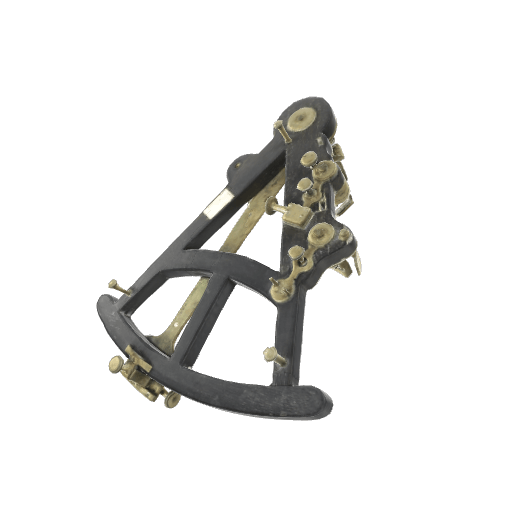Octant
The octant was invented around 1730 to facilitate navigation at sea. This instrument is commonly used by many sailors in the second half of the 18th century, as it allows them to measure their position at sea when there is no horizon in sight and only the stars to guide them. This octant was made by Charles Augustus Schmalcalder, a well-known London craftsman who specializes in the manufacture of orientation and precision tools.
The octant is made of a wooden frame in the form of a graduated eighth of a circle. Its mechanism is composed of two mirrors and a mobile needle. To determine their location and confirm their course, sailors place the octant in line with their eye, use a star as a reference point, obtain measurements and then complete certain mathematical calculations.
The sextant, an even more accurate tool, supersedes the octant by the end of the 18th century. Like the compass and the spyglass, the sextant is also an instrument that facilitates navigation offshore.
References
Date: 1808–1827
Origin: London, England
Owner: Université du Québec à Rimouski. Maison Louis-Bertrand. L’Isle-Verte.
Sources:
Smith, J. (1993). The Schmalcalders of London and the Priddis dial. Journal of the Royal Astronomical Society of Canada, 87(1), 4–13.
Smithsonian National Museum of American History. (n.d.). Octant. Retrieved August 11, 2022, from https://amhistory.si.edu/navigation/type.cfm?typeid=4
Gouvernement du Québec. (n.d.). Octant. Répertoire du patrimoine culturel du Québec. Retrieved April 10, 2022, from https://www.patrimoine-culturel.gouv.qc.ca/detail.do?methode=consulter&id=214715&type=bien
History of Science Museum. (n.d.). Octant. Retrieved April 9, 2022, from https://www.hsm.ox.ac.uk/octant
Trade Mark London. (n.d.). Schmalcalder. Retrieved April 9, 2022 from https://www.trademarklondon.com/schmalcalder/
